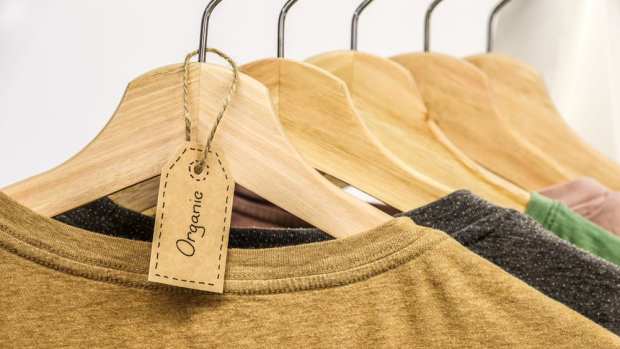The Pivot That Made A Sustainable Brand A Consumer Staple

Sustainable fashion was “in” this year – with all make and manner of new and established brands advertising their clothes/shoes/accessories designed to be environmentally sustainable, particularly given how incredibly polluting the fashion industry is in terms of land use, water use and the 21 billion pounds of textile waste that ends up in landfills each year.
But back in 2010, as the fast-fashion movement was first picking up momentum, betting on a brand built around a sustainable production strategy was something of a riskier bet. But it is the bet that Amour Vert (French for Green Love) Founders Christoph Frehsee and Linda Balti decided to make when they launched their fledgling fashion brand.
The aesthetic the brand was aiming for, according to Balti, was a translation of European sophistication into a more laid-back, easy-to-wear California style.
In the world of fashion, European chic meeting laid-back California is not a terribly outré ground to stake out. But their commitment to sustainability – from choosing materials to building an extremely light and agile supply chain – was a little more challenging. After a near-decade of working to enhance the process, a new fashion item at Amour Vert can take as little as 48 hours from initial design through the start of production.
According to current CEO Aaron Hoey, it can all mostly happen “in real time and on a single day.” And by all, he means all – from doing the initial sketches to making the patterns, sewing a sample, fitting a model and troubleshooting, photographing for the web team and sending to production.
A few weeks later, according to Hoey, a first small run of the product will be ready for sale, and the images will be uploaded to the firm’s DTC site.
And the items on offer, Hoey told PYMNTS, are and always have been fully sustainable.
Sustainable materials are a complicated arena, which Amour Vert navigates by forging direct partnerships with fabric mills so they can directly and easily source what they consider their signature fabrics: beechwood fibers harvested from beech trees, eucalyptus-based fabric called tencel made from farmed trees, mulberry silk and merino wool.
“Sustainable isn’t a marketing claim for us – it was the principle the firm was founded on from day one,” said Hoey. “The goal was to make every aspect sustainable – the production processes, the employment conditions of our workers and the material we make our goods out of. We’re changing the way the industry looks at all these practices.”
But for all they did right from day one in getting ahead of the sustainability curve, the brand found itself having to make a pivot three years ago. Until very recently, Amour Vert drew most of its revenue from wholesale sales – three years ago, roughly 90 percent of their goods were sold from the shelves of other stores. Under Hoey, the firm started to change direction, moving toward being a primarily DTC brand that is building out a fuller omnicommerce strategy. Their store count has steadily climbed over the last several years, and has now reached a total of 10 with the opening of a New York City flagship.
For 2020, Amour Vert’s agenda is more growth and outreach. Consumers want to be good environmental stewards, according to Hoey, but no customer with any kind of passion for fashion wants to trade stylish clothing for sustainable duds. They won’t accept an either/or –which means to reach their core consumer, the company must continually focus on offering a both/and option.
“The brand, I believe, can stand on its own from a fashion perspective,” explained Hoey. “Clearing that gap means being able to meet the customer’s vision for their clothes and offer them a sustainable solution to create it in their closet.”
Amour Vert began its journey as a company that focused on the sale of sustainable items, and then expanded beyond selling just one-offs to offer whole looks and outfits to their customer base. At the dawn of a new year, their goal is to continue its evolution from a simple style brand to a lifestyle brand built around sustainability and transparency.
What other parts of the sustainable lifestyle will they take on with the shortened supply chain model? Stay tuned – there may be more to see there in 2020.
